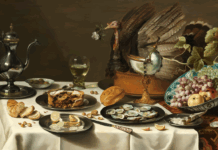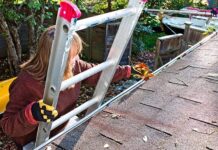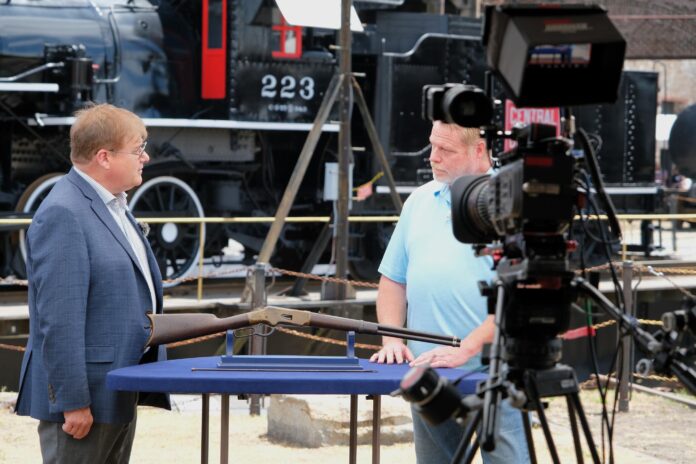
Family heirlooms, forgotten attic discoveries, and flea market finds all converged at the Georgia State Railroad Museum in April as PBS’s Antiques Roadshow transformed the downtown venue into a bustling treasure-hunting hub.
The beloved program — which reaches more than 5 million weekly viewers on TV, streaming platforms and social media — chose the Hostess City of the South as the first stop on its five-city tour marking the show’s 30th anniversary season.
While the episodes won’t air until 2026, GPB News got an exclusive behind-the-scenes look at how America’s most-watched ongoing PBS series comes together.
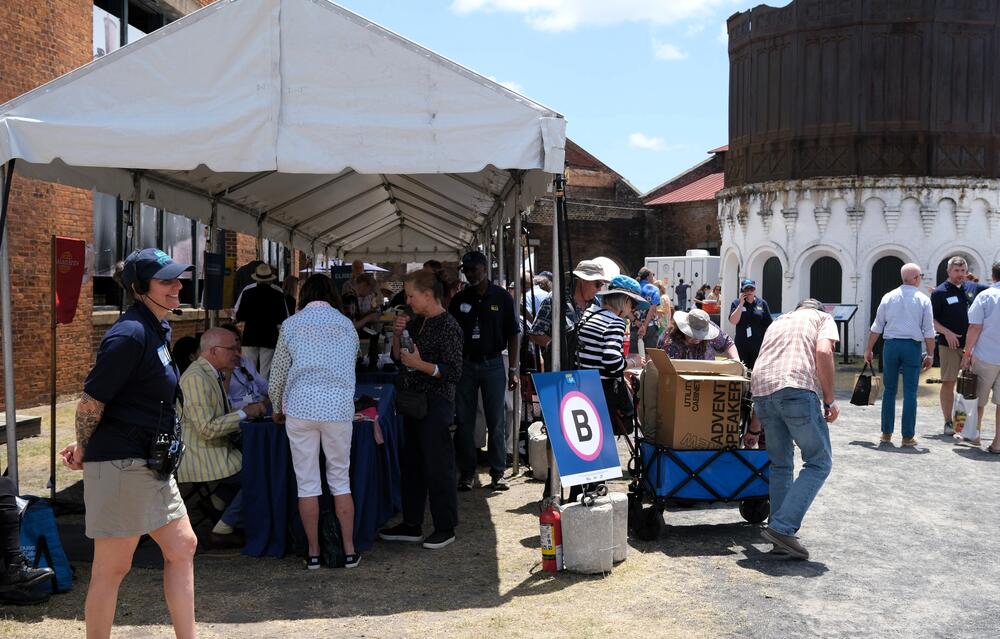
From ‘triage’ to television
For the 2,330 ticket holders who arrived clutching cherished belongings, the journey began at a tent labeled “triage” — the entry point where volunteers sorted each item into one of more than 20 categories.
“I’m Stephanie; I just need to see your things so I can make sure you get to the right expert,” a volunteer told a pair of guests entering the tent, directing them with a map of the sprawling outdoor venue that houses an antebellum train repair shop.
The sorting process is crucial, as each item requires evaluation by specialists in fields ranging from folk art and furniture to jewelry and Japanese antiquities.
Following Antiques Roadshow‘s privacy policy, GPB is not mentioning guests’ last names, due to the high value of some appraised items.
“It’s much less crowded and more organized than I thought it would be,” said Kathleen from South Carolina, who brought a glass vase that had belonged to her grandmother. “Everything is timed. It’s interesting to talk to other people that are here with their things. And I recognize a lot of the folks from TV.”
SEE ALSO The Savvy Picker: Trips and tips for tracking vintage treasure
Expectation versus reality
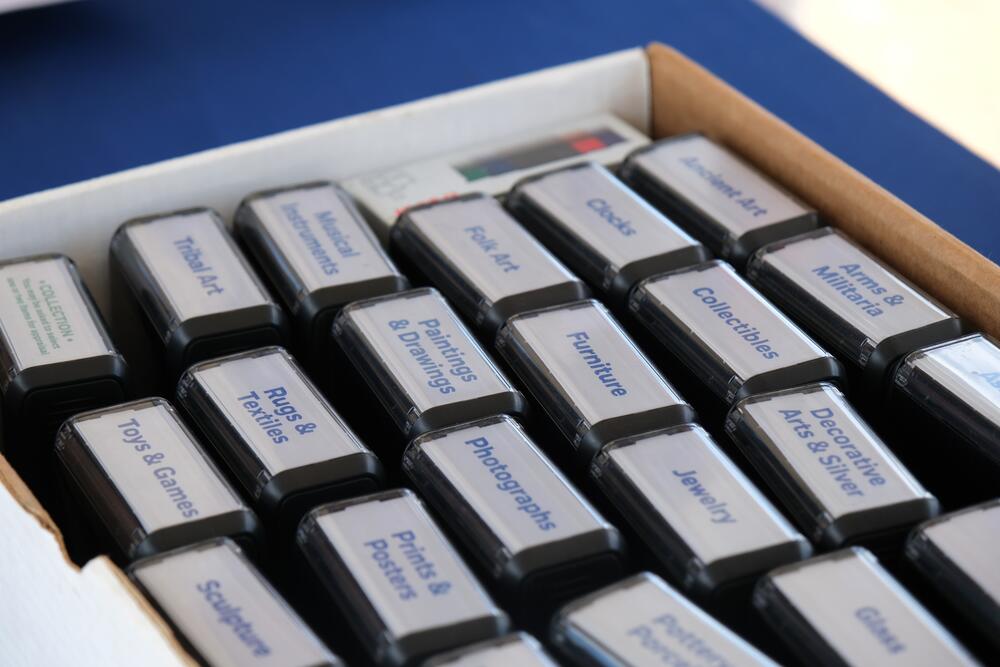
Although the program is famous for its dramatic reveals of unexpected valuations, the reality for most attendees is quite different. Of the more than 2,300 people who showed up to the Savannah taping, only 112 items were filmed, including both full appraisals and quick “snapshot” assessments.
For Kathleen, her encounter with glass appraiser Amanda Everard — who runs an auction house in Savannah and has been an Antiques Roadshow expert for over a decade — brought disappointing news.
After examining the vase with a magnifying glass, Everard rendered her verdict: “This is probably French. And it’s lovely green glass and it’s got sterling overlay on it in this wonderful Art Nouveau patterning to it, with all the flowers and the scrollwork. I think in today’s market, it’s probably not quite as expensive. Today, you’re probably looking at around $400 to $600.”
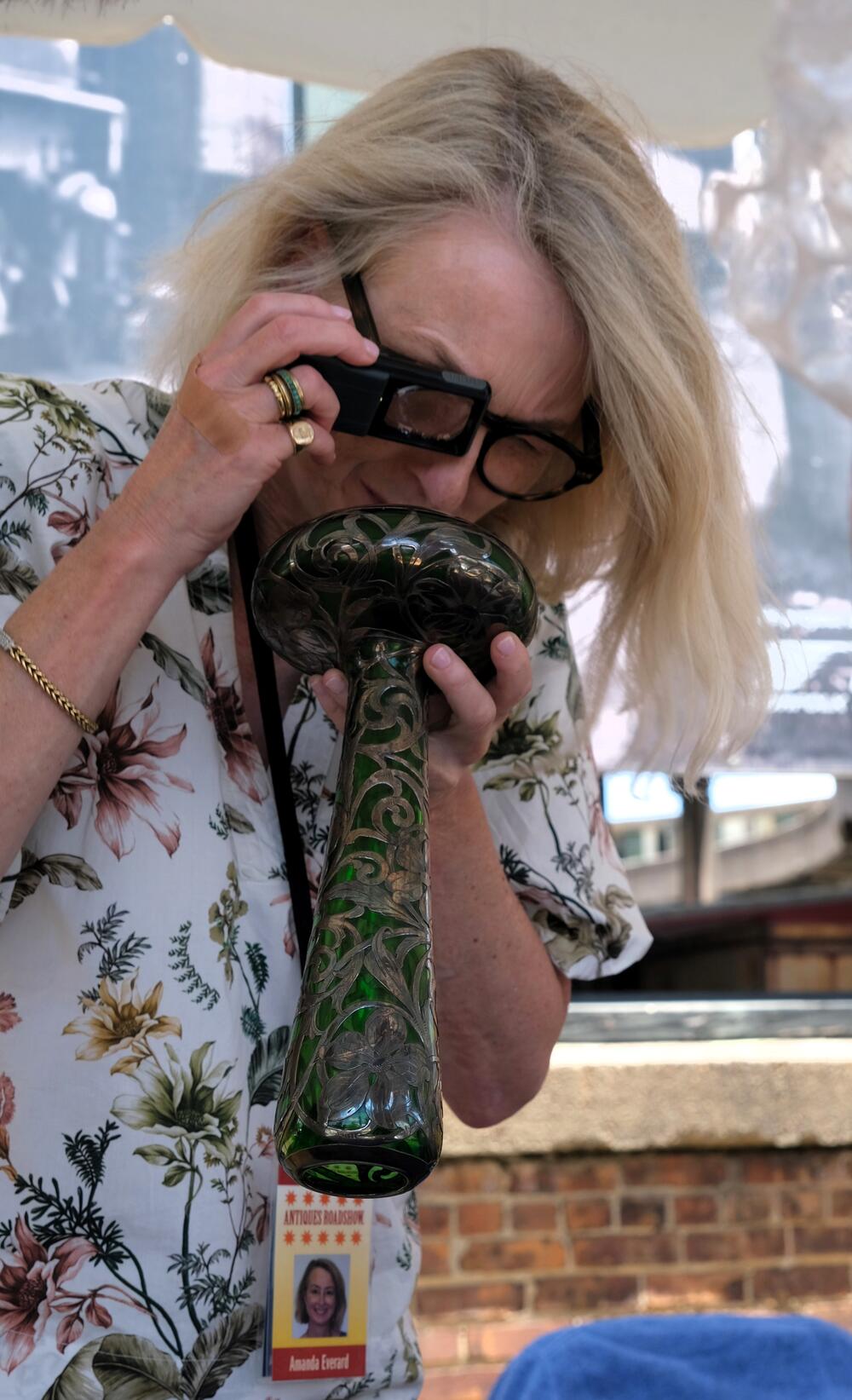
The valuation was significantly lower than the $2,500 to $3,000 Kathleen had been told about 30 years earlier at a local appraisal event.
“Tastes change. I get it,” Kathleen reflected afterward, taking the news in stride. She had previously mentioned, “I was the only girl in my family for 60 years, so I got stuck with a lot of things that I did not want.”
Taking flight with nostalgia
Not all appraisals brought disappointment. Twin sisters June and Becky, both retired flight attendants, arrived wearing their vintage airline uniforms — June in her 1973 Delta garb and Becky sporting pieces dating to 1975 and 1991 from the now-defunct Eastern Air Lines.
“In 1973, it seemed like a lot of women were just teachers and nurses. Nothing wrong with that. That’s great. But being a flight attendant, you got to see the world,” June said about her career choice.
When June won tickets to the taping through the show’s lottery system, she couldn’t contain her excitement.
“I called Becky and said, ‘I won the lottery! It’s the only lottery I’ve ever won!’ I can’t get the lottery to the Savannah Bananas, but I got this,” she recalled, referencing Savannah’s barnstorming baseball team whose games are notoriously difficult to score tickets to.

The sisters’ pristine uniforms earned them spots among the select few whose appraisals were filmed. June’s complete Delta ensemble was valued at $1,500, while Becky’s mixed-era set came in at $1,000.
Despite the unexpected windfall, the twins say their uniforms won’t be heading to auction.
“We’ll hold on to them,” June said. “So many things — they’re valued at whatever, but they mean more to you than what the money is. You know, sentimental.”
“And,” added Becky with a laugh, “I don’t know if our kids could fit in it anyway.”
Savannah’s second showing
The Savannah taping marked Antiques Roadshow‘s second visit to the Hostess City, having previously filmed there in 2003. This return trip held special significance for locals.
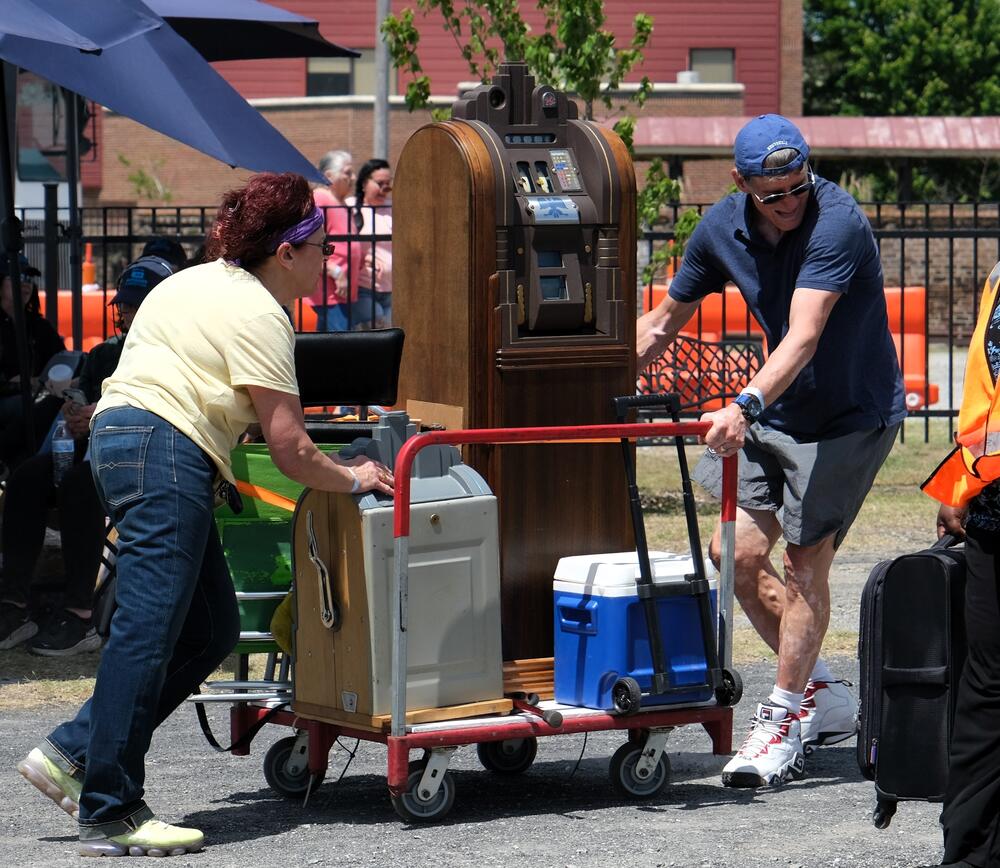
“I’m a native Savannahian myself, and I will tell you that Savannahians are very proud of our history — and we find our history to be the most important history,” said Nora Fleming Lee, CEO of Coastal Heritage Society, the nonprofit that owns the Georgia State Railroad Museum, with a laugh. “And so, to have an opportunity like this on a national stage to share these little bits of our family stories that are in our homes — and bring them out and share them with the world — is so incredible.”
The city’s rich history was evident in some of the items presented, including a huntboard with provenance linked to Jim Williams — the Savannah antiques dealer and historic preservationist who was the central character in John Berendt’s 1994 bestseller Midnight in the Garden of Good and Evil.
The most valuable treasure unearthed during the Savannah stop was a 1992 tapestry called “Lost Image VII,” appraised by textiles expert Martina D’Amato at $150,000 to $250,000 for auction value and $500,000 for insurance purposes.
Other notable finds included a signed copy of Margaret Mitchell’s 1936 novel Gone With the Wind, which drew significant interest from appraisers, given its connection to Georgia’s literary heritage.
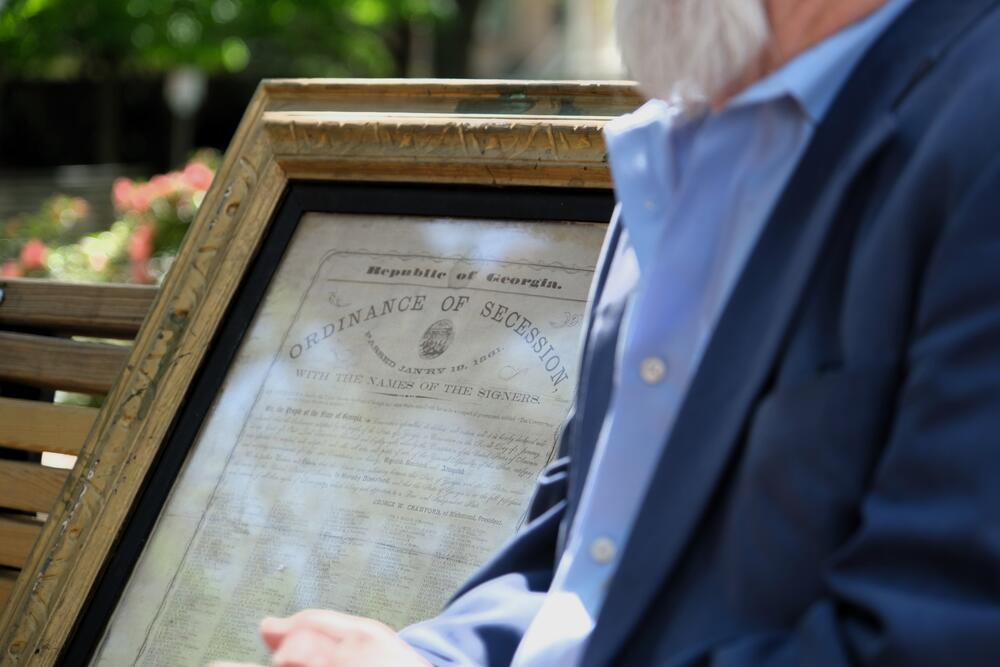
Beyond the price tag
For executive producer Marsha Bemko, who has guided the show through years of success, the true value of Antiques Roadshow extends far beyond dollar figures.
The program has increasingly transitioned to filming in outdoor locations rather than indoor venues like convention centers. While high-dollar appraisals draw television audiences, Bemko noted that viewers tend to prefer episodes shot outside because they feel more unique and specific to each city.
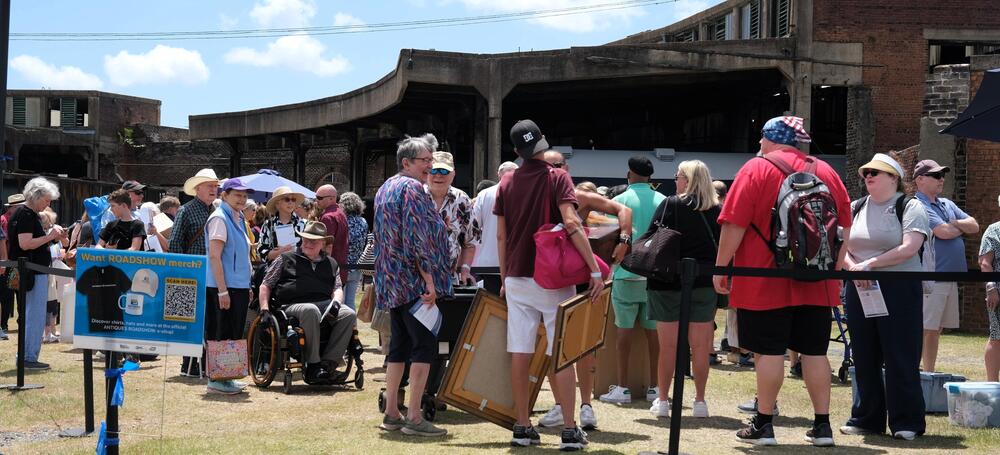
(Bree Zender/GPB News)
“It’s all about the people who are coming here today,” Bemko said. “For most of them, they’re not going to be shot. They’re going to find out that they own something worth $50 [or] $100. But they will have the experience of learning more about what they own. They’ll have chatted with people in line, inevitably — and having that shared experience, our shared humanity, is really special and should be treasured forever and ever.”
This article appears on Now Habersham in partnership with GPB News





